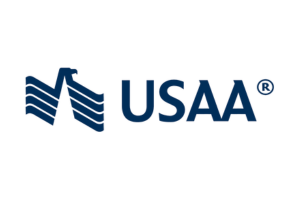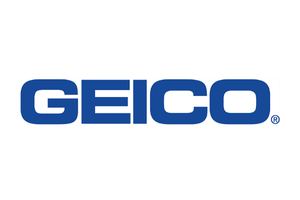
Company Facts
Min. Coverage in California
A.M. Best Rating
Complaint Level


Company Facts
Min. Coverage in California
A.M. Best Rating
Complaint Level

Company Facts
Min. Coverage in California
A.M. Best Rating
Complaint Level
The law is the law. In California, you have to have certain minimums on your auto insurance policy to abide by it. California is a little different than most states because you don’t actually have to have an auto insurance policy if you do one of the following:
- Make a $35,000 cash deposit to the California DMV
- Get a DMV-issued certificate of self-insurance for owners of vehicle fleets with 25+ vehicles
- Get a $35,000 surety bond from a California-licensed insurance company
Some people really don’t want to pay for auto insurance. As you can see, the cost to do so for liability alone is quite high. You need to have the amount of coverage an insurance company would normally require on hand to prove financial responsibility.
Why make it complicated? Go the auto insurance route and all you’ll need to do is purchase the minimum bodily injury liability amounts below. This can save you from having to pay a ton out-of-pocket if you’re in an accident too.
- $15,000 of personal injury coverage per person
- $30,000 of coverage per accident
- $5,000 of personal property coverage
What Other Coverage Types Should You Consider?
We’ve told you the minimum requirements by law in California, but the bare minimum is rarely enough for when something goes wrong. It’s only meant to cover the other party’s damages and medical costs. Sometimes, it may not even cover that. Put more protection on your auto plan by upping the following coverage categories:
- Comprehensive Coverage – Comprehensive coverage does everything that collision coverage does like helping pay repair costs for damage caused by hitting an object or vehicle or damage from hitting an animal, vandalism, fire, and more.
- Collision Coverage – If you play bumper cars with another vehicle, this type of insurance is there to help cover the cost. It comes into play to cover property damage regardless of who is at fault in a collision with another driver.
- Medical and Funeral Services Coverage – If injury or death result from an accident, this type of coverage is there to help.
- Uninsured/Underinsured Motorist Coverage – If someone causes an accident and doesn’t have enough or any insurance, this coverage will help you with the bills. This could also include hit and run drivers or drunk drivers. You can sue an uninsured driver, but you could be stuck in court for months only to find they don’t have the money to pay you.
- Rental Car Coverage – Sometimes after an accident, cars need to go into the shop for a while. This coverage supplies you with a rental car for a specific amount of time while your car is being fixed. Generally, rental insurance covers a certain amount for up to 30 days.
- Towing and Labor Coverage –If you need a tow due to an accident or car malfunction, your insurance company can help pay for it.
Read more: What To Do After A Hit And Run Accident In California
How Much Does California Auto Coverage Cost?
In 2014, California drivers spent about $1,962 a year on car insurance. That’s about 24% higher than the national average, but isn’t nearly as much as you’d spend to pay for damages or medical bills on your own.
California drivers can qualify for a number of discounts. This is especially true if you look for discounts and use telematics programs with some insurers. California law also has one particular discount built in.
Read more: Understanding California Auto Insurance Laws
What Is The Good Driver Discount Policy?
California law makers introduced a law in 1988 that requires insurance companies to give good drivers a discount. This law is known as Prop 103 and all you have to do is hold a license that’s at least three years old and meet the following requirements to qualify.
- No more than one point on your driving record due to a violation(s)
- No more than one traffic school course taken because of a traffic violation
- No accidents that resulted in injury or death that were your fault
Prop 103 also makes it illegal in California for insurance companies to use your credit score or credit history when determining what your car insurance premiums will be. No matter if yours is great or needs work, it won’t make a difference to your rates. Whether you just want to fulfill financial responsibility requirements or if you want more comprehensive coverage, insurance companies have to rely on directly relevant factors in California.
Cheaper Auto Coverage Exists
In 1999, California established the Low Cost Automobile Insurance Program (CLCA) to reduce the number of uninsured motorists on the road. It’s a consumer focused program that gives low-income drivers discounted car insurance. In order to qualify for the CLCA, you need to meet the income requirements, plus:
- Be at least 19 years old
- Have a valid California driver’s license
- Own a car with a value of $25,000 or less
Read more: Affordable Auto Insurance Options For Low-Income Individuals
To see if you qualify, fill out the questionnaire on the CLCA website.
Proof of Insurance Requirements in California
You can’t get a license or registration renewed without “proof of established financial responsibility.” In layman’s terms, this means proof of insurance. If you get pulled over, you’ll also need to have proof of insurance with the following information:
- The make, model, year, safety rating, value of your car
- Your name and the name of any other drivers under your car’s policy
- The expiration date of your current insurance policy
Electronic Insurance Cards
California’s Vehicle Code also allows you to use your digital insurance card as proof of insurance. If you have an insurance policy with a company that has developed an app you will likely have proof of insurance on your smart phone.
Violation Fines and Penalties You Want To Avoid
Fines and penalties can be pretty steep if you don’t carry an active insurance policy. However, about 15% of Californians aren’t insured. If you’re one of them and get pulled over, you could face:
- $100 – $200 in fines for your first offense
- $200 – $500 in fines for each offense within three years after your first
- Your car can be impounded until you get insurance and prove that you have it
Suspended Registration
Don’t fall down this wormhole. Your car’s registration can be suspended if:
- The California DMV finds out that your insurance expired and you still haven’t renewed it 45 days after that
- Your car insurance information is not given to the DMV within 30 days of your car’s initial registration or transfer of ownership
- You registered your car with false proof of insurance
You’ll know right away if this happens because the DMV will send you a letter. You can re-register your car with a proof of insurance at the cost of $14 and apply for reinstatement by sending a notification letter to:
DMV
PO Box 997405
Sacramento, CA 95899
You can re-apply without a notification letter by contacting:
DMV – VRFRP Unit
PO Box 997408 N305
Sacramento, CA 95899-7408
Did You Know?
Driving a car that people love to steal can make your car insurance rates go up because the insurance companies can see you as being a higher risk driver. We’re not telling you to switch cars. We just want you to know that your car choice could impact your insurance rates. Here is a list of the most stolen cars in California*:
- Honda Accord
- Honda Civic
- Chevrolet Pickup (Full Size)
- Toyota Camry
- Acura Integra
- Ford Pickup (Full Size)
- Toyota Corolla
- Nissan Sentra
- Nissan Altima
- Toyota Pickup
*According to www.nicb.org
California Auto Insurance Experts
Still have questions about insurance rates, California laws, or any other auto insurance questions? Call one of our agents to help guide you through the process of purchasing an insurance policy that meets your needs.

